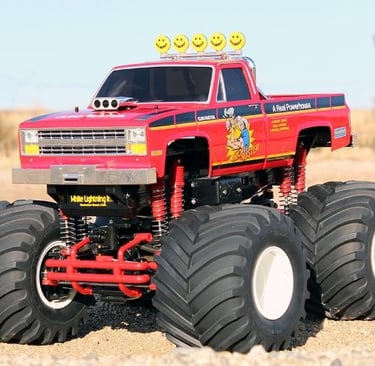The Evolution of Radio-Control Toys: A Journey Through Time
The history of radio-control (R/C) toys is a fascinating journey from early scientific experiments to sophisticated hobbyist machines. This article traces the evolution of R/C toys from their conceptual beginnings in the 1800s to the technologically advanced models of the 2000s, highlighting groundbreaking R/C cars, boats, and planes along the way.
RADIO-CONTROL
Admin
5/29/20242 min read


The history of radio-control (R/C) toys dates back to the 1800s, when the first remote-controlled devices were invented. One of the most notable early demonstrations was by Nikola Tesla, who, in 1898, showcased a radio-controlled boat at Madison Square Garden. Tesla's invention, dubbed the "teleautomaton," used radio waves to control the boat’s movements, laying the groundwork for future developments in radio-control technology.
In the early days, R/C toys were primarily used for military and scientific purposes, such as controlling torpedoes and guiding missiles. However, it wasn't until the mid-20th century that R/C toys became popular among hobbyists and enthusiasts.
The 1950s and 1960s saw the emergence of R/C toys as a popular hobby, with the introduction of R/C cars, boats, and planes. These early R/C toys were often cumbersome and difficult to control, but they marked the beginning of a new era in remote-controlled technology.
The 1970s and 1980s saw significant advancements in R/C technology, with the introduction of more sophisticated and user-friendly R/C toys. This was also a time when R/C cars, in particular, began to gain popularity. Groundbreaking models like the Tamiya Porsche 934 (1976) and the Associated RC10 (1984) revolutionized the industry with their speed, agility, and durability.
The 1990s and 2000s saw the rise of electric and nitro-powered R/C cars, which offered even more speed and performance. The Traxxas T-Maxx (1999) and the HPI Savage (2000) were two examples of R/C cars that pushed the boundaries of speed and durability.
In addition to R/C cars, boats and planes also underwent significant advancements during this period. The introduction of 2.4GHz frequency technology and spread-spectrum transmission enabled more reliable and interference-free control. The E-flite Blade CP (2003) and the ParkZone F-27Q Stryker (2005) were two examples of R/C planes that showcased this technology.
Throughout the history of R/C toys, there have been many groundbreaking and revolutionary models that have shaped the industry. Some notable examples include:
Tamiya Toyota 4x4 Pickup (1979)
Kyosho Optima (1985)
Traxxas Stampede (1990)
HPI RS4 (2001)
For more information and pictures, you can visit the following websites:
